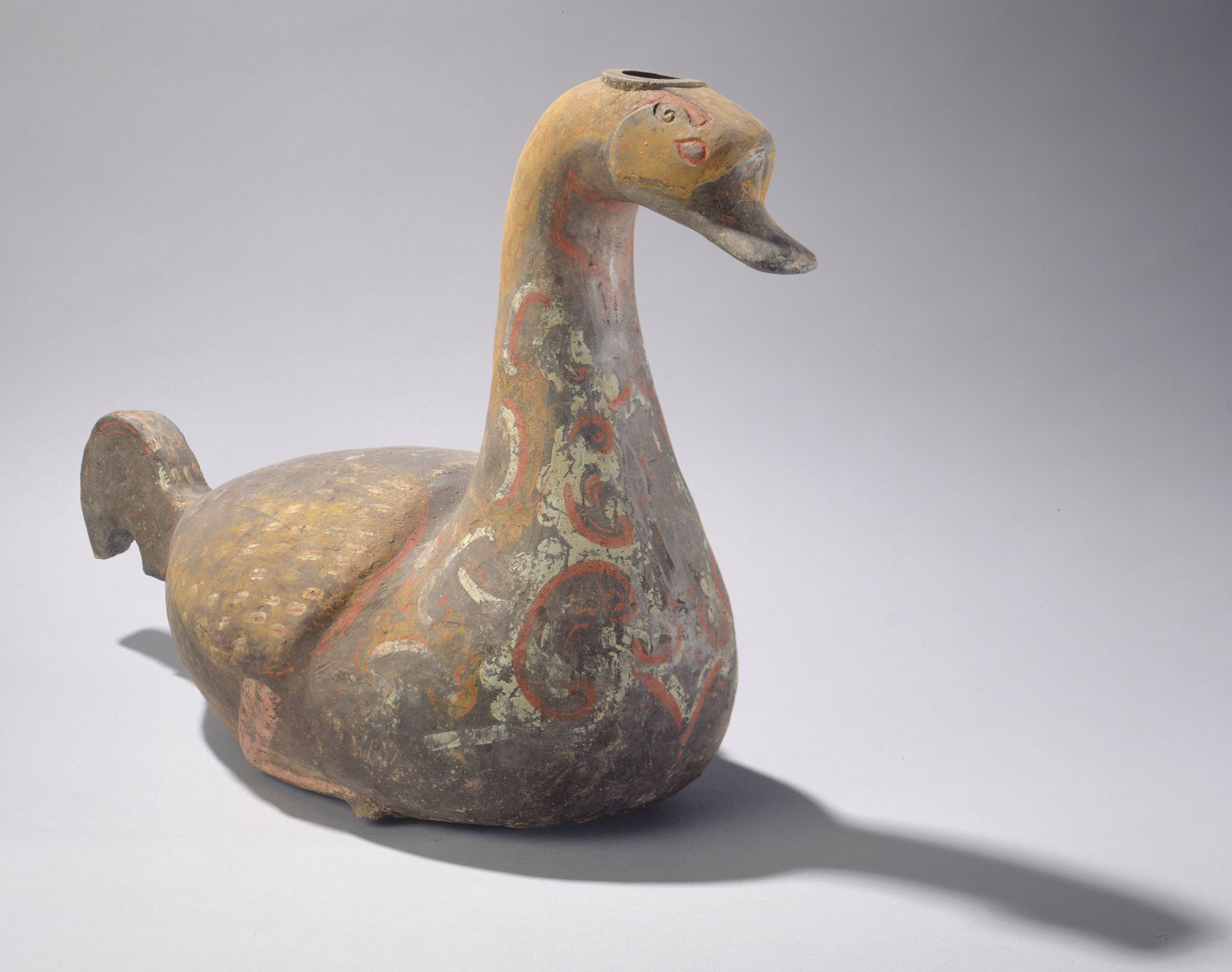
Oie
Entre -206 et 9
Terre cuite, Polychromie
Statuette, Mingqi
Don manuel : Fondation Elf
Terre cuite, Polychromie
Statuette, Mingqi
Don manuel : Fondation Elf
M.C. 9913
Several goose-shaped objects have come down to us from the Western Han era (206 BC-AD 9). The theme probably symbolised prosperity, as in the widely reproduced lamps. These terracotta pouring vessels in the shape of a goose are rarer.
The Cernuschi Museum specimen is the largest and best conserved known to date. The well-preserved polychrome traces the line of the feet, with overlapping motifs playing with the grey terracotta ground to suggest the neck and breast feathers. The grey-coloured clay points to its northern origin.
Under the Eastern Han dynasty (AD 25-220), numerous mingqi depict ducks and geese, often in relation with modelli of farms. The production of large fowl-shaped pieces appears to have ceased in this period.
Reference(s) : Marie-Thérèse Bobot, Activités du musée Cernuschi, Arts asiatiques, 1994 ,t.49, p.114.
Gilles Béguin, Activités du musée Cernuschi, Arts asiatiques, 2000, t.55, p.74,75,204.
Gilles Béguin, Arts de l’Asie au Musée Cernuschi, Paris-Musées / Findakly, 2000, p.75.
Gilles Béguin, Art chinois, Musée Cernuschi, acquisitions 1993-2004, Paris-Musées / Findakly, 2005, p.74-75.
Gilles Béguin, Activités du musée Cernuschi, Arts asiatiques, 2000, t.55, p.74,75,204.
Gilles Béguin, Arts de l’Asie au Musée Cernuschi, Paris-Musées / Findakly, 2000, p.75.
Gilles Béguin, Art chinois, Musée Cernuschi, acquisitions 1993-2004, Paris-Musées / Findakly, 2005, p.74-75.


